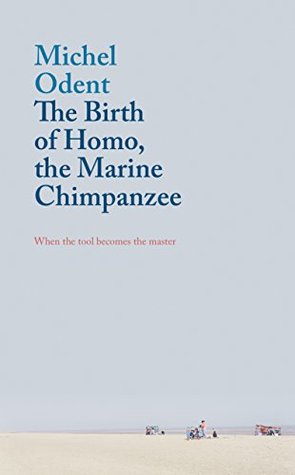The Birth of Homo, the Marine Chimpanzee: When the tool becomes the master by Michel Odent
My rating: 5 of 5 stars
An artist, a creator, an engineer truly becomes a master of their trade when they first play by the rules, internalise what they learn and then slowly question each aspect of their learning to constantly refresh their world view. There comes a turning point in their exploration when they break a rule because now they understand more… they can see further and join more dots. This takes a lifetime in almost every case. Breaking rules is ultimately the way we have become such a powerful race.
Michel Odent in this book has shown his mastery on the topic of human birth by breaking the very rules he was so influential in facilitating. This is a brave, broad and paradigm shifting book. This is a book on what we need to know about childbirth today, being human babies and how to interact with our world without the rose-tinted view of our cultural heritage. This is a book that takes the long view into our anthropological past, past rituals, norms and social influences to show us how we were truly being human when none of these influences were present. Since childbirth precedes all our cultural myopic views, to truly make the right choices towards the birthing mother and her child, we need to be free from the binds of these social and cultural norms.
The book is also full of controversial musings, punctuated with interdisciplinary research that at times makes for rather uncomfortable reading, for example the connection of mode of birth (caesarean) and autism. Even though there is no current evidence to connect any causal links to mode of birth and autism, Prof. Odent is brave in trying to get us to see far reaching possibilities of certain interventions at birth and its long-lasting implications on an infant. Despite not being convinced by arguments presented at various points in the book, it is worth seeing the premise of such arguments from a longitudinal perspective and being more questioning about any deviations of primal practices from our evolutionary past prior to the Neolithic revolution and its subtle impact on our lives today. It also includes current evidence from fields of epigenetics and microbiome studies among other advances. All these fields are brought together under the narrative of birth and our current birthing culture.
This book has to be praised for its breath, reach and scope in joining the dots towards understanding the otherwise seemingly disconnected ideas that might influence the perinatal period. It may provide a pause to think for many professionals who work within the perinatal period of a woman’s life and her infant. It also allows us to borrow from our mammalian friends on aspects of childbirth practices that in our modern world have been continually hijacked to serve a cultural norm rather than the “true” experience that mothers and babies need to have. This book has the seeds to create a new modern roadmap to empowering birthing mothers and our future generations. This book argues convincingly to trust in nature and the deep instincts mothers and babies possess.
View all my reviews
© MummyYoga 2020. Site by: VisualSoup


